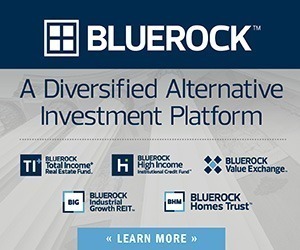Erik Conrad | InCommercial Property Group
By now, it’s old news that interest rates have increased dramatically. The Federal Reserve in the recent tightening cycle hiked rates faster and farther than any period in the past four decades. But that wasn’t even the only bank-related pressure on commercial real estate as the Federal Reserve also reduced the money supply more quickly than in the last six decades and proposed significant capital requirements for banks known as Basel III Endgame.
The last few years have been a hard time to be in commercial real estate, but it’s been even harder to be a lender in the space – lenders, who rely on loan payoffs to recycle the capital into new loans don’t get many payoff requests when they have loans on the books at 3-4% and savings accounts are paying 5% or more!
Another major source of debt capital for commercial real estate is CMBS and other asset-backed securitized loans. For those unfamiliar, these are loans that are packaged together and sold off as bonds by the banks for fixed durations. At its core, a lender makes a loan and then slices it up and sells the loan for a small markup in the form of bonds to bond buyers – it works great for the banks when interest rates are stable and breaks when interest rates move quickly because the value of the bonds aren’t stable enough to have certainty around profit margins. In theory, banks aren’t supposed to take that kind of risk, and interest rates have been anything but predictable over the past two years.
So here we are, debt issuance for commercial property acquisitions in 2023 was roughly at 2011 levels without adjusting for inflation, and yet most commercial real estate with the notable exception of multi-family, is at or very near its peak value (to say nothing of the stock market which is at or near all-time highs as well).
How can it be that with all of the fundamental demand for housing, multi-family is the asset class most impacted by interest rates? Isn’t multi-family supposed to be able to absorb the market adjustments and increase rents to deliver investor returns in any market? That’s what I’ve always been told (though unfortunately never experienced).
What can explain these divergent experiences with retail properties and net leased properties? How can net lease experience stable values in the face of high interest rates and constrained capital while multi-family experiences a massive adjustment in values under the same conditions? It’s even more confounding when one considers the quasi-government agency liquidity and sub-market debt pricing bestowed upon multi-family as an essential asset and a societal good.
THEORY 1: Price Adjustments are Still to Come
It’s possible that thanks to the government-subsidized liquidity in the multi-family market there has been more “price-discovery” so we’re seeing the impacts of higher rates translate to values in that asset class before other asset classes for which very little capital is available. In fact, office property values show far more stability than one might expect given the poor utilization, lack of liquidity, and heavy cost of operations in that asset class. If we can’t predict when office demand will stabilize by employers and users, it’s hard for price discovery to occur.
The data, across asset classes, show transaction volumes consistently impacted over the past several years, with office being notable in its lack of transactions since the start of the pandemic rather than associated with the tightening cycle. The argument that there is more price discovery can’t explain what we’re experiencing, and the answer must lie a little deeper – more fundamental.
THEORY 2: Current Rates are Temporary, Projected Income is Driving Values
Commercial real estate is a long-term investment and regardless of a particular investor’s investment horizon, a serious investor will be evaluating the investment on a 20-year or longer investment horizon. After all, even if you have a five-year horizon, your buyer will be looking into the future. Real estate isn’t consumer electronics, we build permanent structures intended to be used for decades and so that must be our evaluation period.
Most people think of interest rates in terms of their home and a 30-year mortgage. That experience, unfortunately, is not very helpful when assessing commercial real estate which is often financed with five- or ten-year loans. So, the logical conclusion on a 20-year investment and a five-year loan means the investor is really looking at long-term rate expectations and not as focused on the rate quoted today. Today’s rate and availability are important, but is it 10%, 20%, or maybe 30% important? It certainly isn’t higher than that for any rational investor or you’re risking getting well over your proverbial skis.
Multi-family, through various government agency-sponsored debt providers, has experienced less debt and liquidity disruption than net lease, so why then is the valuation change so much more dramatic? What’s the other variable in the value equation that might explain the difference?
The remaining variable is the projected income and that is where net leased properties can impress or bore you depending on your perspective. In 2020 and 2021, rents in multi-family were driven by easy money, stimulus, and work-from-anywhere policies, which also drove inflation to rates unseen in decades. In 2022 and 2023, those drivers have reversed, and the ensuing inflation is hitting the insurance, property taxes, and maintenance expenses that multi-family operators now need to absorb while rent growth stagnates and retreats. The projected income has declined dramatically and that explains the retreat of values in multi-family in most cases.
What happened over that same period in net lease? Nothing to speak of. Some markets have fallen out of favor – urban store closures are inevitable when political winds create bad retail environments. Retailers don’t want to operate in locations where their customers and employees don’t feel safe but high-profile store closures obscure the underlying trend of increased store openings and renewed retailer reliance on brick-and-mortar locations. Outside of retailing 101, construction costs are way up, and inflation has created a dynamic where tenants with long-term leases have so much value in their existing leases, a lower cost structure, lower taxes, and lower insurance such that relocating to the next shiny development rarely makes sense. Meanwhile, as an investor in net lease, the renewal rates have all increased, the income is unchanged (whatever the lease always had), the expenses are the tenant’s issue, and even those are being paid via inflation-diluted dollars.
Renewal rates have gone up (primary risk driver down), the income is stable and the long-term outlook for interest rates (Federal Reserve Target) is essentially unchanged. This leads to the conclusion that the intrinsic value of net leased properties has increased (same income, lower risk) over the past two years.
THEORY 3: Interest Rates are Masking a Huge Demand Shift to Net Lease
The premise here is that interest rates, liquidity, and all the aforementioned factors are impacting values equally across asset classes. In a supply and demand model of the investor economy, the difference in valuations must be that more investors are choosing to invest in or hold onto their net lease properties and are more interested in selling off or steering clear of multifamily. The reason could be many of the same drivers already discussed, along with the massive retirement and wealth transfer occurring as boomers retire and wealth concentrates leading more and more investors to stable bond-like returns. Those bond-like returns can be found in net lease of course, but they are also found in… bonds, which further lowers borrowing costs and ultimately supports net leased properties either way.
This theory implies that as interest rates start to fall and multi-family prices stabilize, net lease values soar to new heights as investor demand is unleashed by lower rates against a limited supply of suitable investments.
CONCLUSION:
Where do we go from here?
We buy into the second theory that interest rates are only modestly determinative of values and today presents a significant buying opportunity. We’ll be pleasantly surprised if the third theory is correct, and demand is overwhelming in the years to come. Lastly, we stay focused on building robust income streams with manageable debt levels.
Sellers in today’s market are selling due to external and dare we say transitory, factors. Valuations have held so strongly because the projected income variable has increased with the higher likelihood of renewals and rent bumps while the long-term interest rate projections are unchanged. If anything, the current interest rate environment and lack of debt capital have masked what is otherwise a bull run in values for this asset class.
When an investor wants to feel the market and take the ups and downs, multi-family makes a lot of sense, but a larger and larger percentage of today’s (and tomorrow’s) investors are going to want to mute that volatility in favor of stable and predictable income streams. A growing share of American investors are going to purchase bonds (driving down borrowing costs) and net leased properties (in pursuit of some extra returns with stability). These bond-like assets are likely to deliver outsized returns for several years to come as we enjoy both current income and asset appreciation from long-term trends being unleashed as the Federal Reserve eases off its restrictive policies.
ABOUT INCOMMERCIAL:
InCommercial is a full-service, end-to-end investment real estate portfolio manager with deep subject matter expertise. Through a 20-year history, its experienced team is dedicated to creating demonstrable value by leveraging their long-standing industry relationships to attempt to create value at each step of the investment cycle starting at acquisition and continuing through streamlined operations, accretive financing, and efficient exits.











